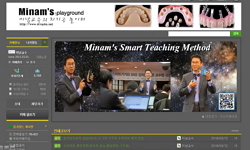이 연구는 휴먼스케일 인지관점에서 도시재생설계안의 전개 과정과 공간 구상안을 제시하는 것이 목적이다. 김해시 도시재생설계안을 분석하여, 설계 대상 지역의 특성과 거주민들의 인지...
http://chineseinput.net/에서 pinyin(병음)방식으로 중국어를 변환할 수 있습니다.
변환된 중국어를 복사하여 사용하시면 됩니다.
- 中文 을 입력하시려면 zhongwen을 입력하시고 space를누르시면됩니다.
- 北京 을 입력하시려면 beijing을 입력하시고 space를 누르시면 됩니다.
https://www.riss.kr/link?id=A107319367
- 저자
- 발행기관
- 학술지명
- 권호사항
-
발행연도
2021
-
작성언어
Korean
- 주제어
-
등재정보
KCI등재
-
자료형태
학술저널
-
수록면
151-164(14쪽)
-
KCI 피인용횟수
0
- DOI식별코드
- 제공처
-
0
상세조회 -
0
다운로드
부가정보
국문 초록 (Abstract)
이 연구는 휴먼스케일 인지관점에서 도시재생설계안의 전개 과정과 공간 구상안을 제시하는 것이 목적이다. 김해시 도시재생설계안을 분석하여, 설계 대상 지역의 특성과 거주민들의 인지요소가 설계개념과 공간 구상안에 반영되는 과정을 제시하였다. 사람들이 쇠퇴한 도심을 걷고 싶은 거리, 가고 싶은 공원과 상점가, 편안한 거리로 인지할 수 있도록, 인간의 오감을 설계의 출발점으로 삼아 사람 중심의 도시재생설계안을 도출하였다. 휴먼스케일의 밑바탕을 이루는 오감과 인지관점을 도시계획과 설계에 활용하는 것은 적용 범위가 불분명하다는 점에서 한계를 가진다. 그럼에도 불구하고 사람들이 모여들어 도시에 활기를 형성하는데 도시의 이미지가 매우 중요하게 작용하고, 휴먼스케일 인지관점의 시각적 물리적 도시재생설계가 필요한 것은 분명하다. 감각과 감성으로 도시를 이해하지 못하면 기술적 계획과 설계에 그치는 실수를 범할 수 있다. 이런 측면에서 본 연구의 시도는 도시재생과 설계에 있어서 시사점을 준다.
다국어 초록 (Multilingual Abstract)
The purpose of this study is to present the development process and spatial program of the urban regeneration design plan from the perspective of human-scale cognition. By analyzing the urban regeneration design plan in Gimhae City, the process in whi...
The purpose of this study is to present the development process and spatial program of the urban regeneration design plan from the perspective of human-scale cognition. By analyzing the urban regeneration design plan in Gimhae City, the process in which the characteristics of the design target area and the perceived factors of residents are reflected in the design concept and spatial program was presented. A people-centered urban regeneration design plan was derived that takes the five senses of humans as the starting point of the design so that people can perceive the declining city as a street that they want to walk, parks and shopping streets they want to go, and comfortable streets. The use of the five senses and cognitive perspectives that form the basis of human-scale in urban planning and design has limitations in that the scope of application is unclear. Nevertheless, it is clear that the image of the city is very important for people to gather and form vitality in the city, and a visual and physical urban regeneration design from the perspective of human- scale cognition is necessary. Failure to understand the city with sense and emotion can make mistakes that are limited to technical planning and design. In this respect, the attempt of this study gives implications for urban regeneration and design.
목차 (Table of Contents)
- 국문요약
- Abstract
- 1. 서론
- 2. 선행 연구
- 3. 설계 대상지 분석
- 국문요약
- Abstract
- 1. 서론
- 2. 선행 연구
- 3. 설계 대상지 분석
- 4. 오감(五感)을 컨셉으로 하는 도시재생설계 방향
- 5. 결론
- 참고문헌
참고문헌 (Reference)
1 임승빈, "환경심리와 인간행태" 보문당 48-76, 2007
2 서선영, "해방촌의 지속가능한 물리적 요소에 관한 연구" 한국도시설계학회 11 (11): 109-122, 2010
3 안의종, "한옥의 친환경 특성이 인간에게 미치는 영향요소 분석" 한국생태환경건축학회 14 (14): 97-102, 2014
4 이효정, "커뮤니티 비즈니스형 도시재생공간의 도시설계적요소 평가" 한국도시설계학회 15 (15): 17-31, 2014
5 국토해양부, "입체/복합 매개공간 설계매뉴얼"
6 국토해양부, "입체/복합 건축공간 설계매뉴얼"
7 이상호, "인지적 공간개념에 의한 실내건축공간의 표현에 관한 연구" (23) : 132-138, 2000
8 송영민, "인지-감정요소에 의한 공간이미지 평가성 분석" 한국실내디자인학회 20 (20): 71-78, 2011
9 박상필, "원도심의 지역성(Locality)을 살리는 도시재생수법, 원도심 지역성(Locality) ‘켜ㆍ결ㆍ얼ㆍ터’에 알맞은 도시설계적 재생수법 적용해야" 159 : 16-25, 2016
10 김민선, "수변공간재생을 위한 도시설계요소 및 가중치 분석 - 한강르네상스 사례를 중심으로 -" 한국지역학회 26 (26): 87-105, 2010
1 임승빈, "환경심리와 인간행태" 보문당 48-76, 2007
2 서선영, "해방촌의 지속가능한 물리적 요소에 관한 연구" 한국도시설계학회 11 (11): 109-122, 2010
3 안의종, "한옥의 친환경 특성이 인간에게 미치는 영향요소 분석" 한국생태환경건축학회 14 (14): 97-102, 2014
4 이효정, "커뮤니티 비즈니스형 도시재생공간의 도시설계적요소 평가" 한국도시설계학회 15 (15): 17-31, 2014
5 국토해양부, "입체/복합 매개공간 설계매뉴얼"
6 국토해양부, "입체/복합 건축공간 설계매뉴얼"
7 이상호, "인지적 공간개념에 의한 실내건축공간의 표현에 관한 연구" (23) : 132-138, 2000
8 송영민, "인지-감정요소에 의한 공간이미지 평가성 분석" 한국실내디자인학회 20 (20): 71-78, 2011
9 박상필, "원도심의 지역성(Locality)을 살리는 도시재생수법, 원도심 지역성(Locality) ‘켜ㆍ결ㆍ얼ㆍ터’에 알맞은 도시설계적 재생수법 적용해야" 159 : 16-25, 2016
10 김민선, "수변공간재생을 위한 도시설계요소 및 가중치 분석 - 한강르네상스 사례를 중심으로 -" 한국지역학회 26 (26): 87-105, 2010
11 조명래, "서울시의 도시재생: 현 주소와 대안" (127) : 18-24, 2015
12 유민태, "상업 젠트리피케이션 지역 방문소비자 유형화와 계층별 장소 선택 특성 비교분석" 한국도시부동산학회 11 (11): 115-141, 2020
13 조준혁, "산업유산기반 창의적 도시재생을 위한 융합디자인사고 체계와 사례 연구" 한국도시부동산학회 10 (10): 5-30, 2019
14 김가영, "사용자의 지각 현상을 통한 공간인지 및 공간행위에 대한 연구 - 공간인지와 사용자 행태와의 관계 -" 한국실내디자인학회 22 (22): 143-151, 2013
15 국토교통부, "도시재생활성화 및 지원에 관한 법률"
16 김재환, "도시재생사업의 형태기반코드 적용 가능성 고찰" 사단법인 인문사회과학기술융합학회 9 (9): 891-901, 2019
17 김영환, "도시재생사업에서 저탄소 녹색 계획요소 활용 및 탄소저감 효과에 관한 연구- 청주시 도심부를 중심으로" 한국도시설계학회 15 (15): 167-182, 2014
18 박정은, "도시재생뉴딜사업 실효성 제고를 위해 무엇을 개선해야 할까?" 1-8, 2020
19 국회예산정책처, "도시재생 뉴딜 분석" 2018
20 조준혁, "기존도시의 스마트도시화를 위한 도시서비스데이터의 통합우선순위 분석" 한국도시부동산학회 11 (11): 5-24, 2020
21 대한건축학회, "건축공간론" 대한건축학회 184-195, 2010
22 Pearce, Ph, "The legacy of Kevin Lynch: Research implications" 23 (23): 576-598, 1996
23 Lynch, K, "The Image of the City" The MIT Press 1960
24 Landry, C, "The Art of City Making" Earthscan 2006
25 Southworth, M, "Shaping the city image" 5 (5): 52-59, 1985
26 Carmona, M, "Public Places, Urban Spaces: The Dimensions of Urban Design" Architectural Press 2003
27 Lynch, K, "Managing the Sense of a Region" The MIT Press 1976
28 Gert-Jan Hospers, "Lynch’s The Image of the City after 50 Years: City Marketing Lessons from an Urban Planning Classic" 18 (18): 2073-2081, 2010
29 Ford, L, "Lynch revisited: New urbanism and theories of good city form" 6 : 247-257, 1999
30 Kartay, A, "Landscape Architecture-Anthropometry Relationship: The Case of İstanbul" 6 (6): 245-254, 2009
31 Francescato, D, "Image and Environment: Cognitive Mapping and Spatial Behavior" Edward Arnold 182-220, 1973
32 Knox, P, "Human Geography: Places and Regions in Global Context" Pearson Education, Inc 2003
33 Moore, GT, "Environmental knowing: Theories, research and methods" Dowden 1976
34 Landry, C, "Creative City" Routledge 2008
35 Gehl, J, "Cities for people" Island Press 2010
36 Sieverts, T, "Cities Without Cities: An Interpretation of the Zwischenstadt" Spon Press 2003
동일학술지(권/호) 다른 논문
-
3기 신도시 부천대장지구 기본계획 수립방안 연구: 1 · 2기 신도시 평가에 기반한 기본구상 및 도시공간계획을 중심으로
- 한국도시설계학회
- 구한민(Gu Hanmin)
- 2021
- KCI등재
-
춘천 캠프페이지 시민공원 마스터플랜 계획안 - “100개의 공원”에 대한 계획을 중심으로
- 한국도시설계학회
- 김영민(Kim, Youngmin)
- 2021
- KCI등재
-
- 한국도시설계학회
- 조영주(Cho, Youngju)
- 2021
- KCI등재
-
물 순환 주거단지의 계획 및 설계에 관한 연구 - 송산그린시티 물 순환 시범마을 마스터플랜의 공간계획을 중심으로
- 한국도시설계학회
- 오호진(Oh, Hojin)
- 2021
- KCI등재
분석정보
인용정보 인용지수 설명보기
학술지 이력
| 연월일 | 이력구분 | 이력상세 | 등재구분 |
|---|---|---|---|
| 2026 | 평가예정 | 재인증평가 신청대상 (재인증) | |
| 2020-01-01 | 평가 | 등재학술지 유지 (재인증) |  |
| 2017-01-01 | 평가 | 등재학술지 유지 (계속평가) |  |
| 2013-01-01 | 평가 | 등재학술지 유지 (등재유지) |  |
| 2010-01-01 | 평가 | 등재학술지 유지 (등재유지) |  |
| 2007-01-01 | 평가 | 등재학술지 선정 (등재후보2차) |  |
| 2006-01-01 | 평가 | 등재후보 1차 PASS (등재후보1차) |  |
| 2004-07-01 | 평가 | 등재후보학술지 선정 (신규평가) |  |
학술지 인용정보
| 기준연도 | WOS-KCI 통합IF(2년) | KCIF(2년) | KCIF(3년) |
|---|---|---|---|
| 2016 | 0.81 | 0.81 | 0.9 |
| KCIF(4년) | KCIF(5년) | 중심성지수(3년) | 즉시성지수 |
| 0.9 | 0.91 | 1.333 | 0.4 |




 DBpia
DBpia





